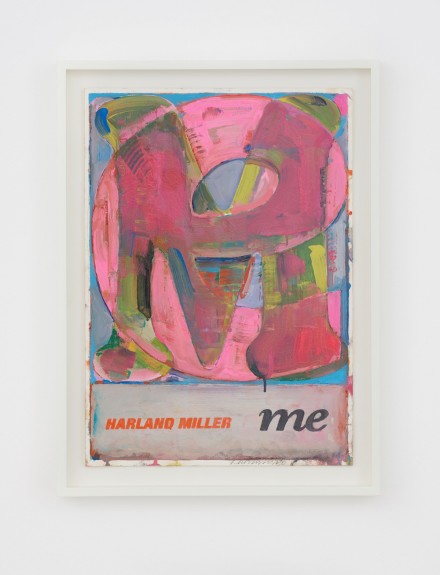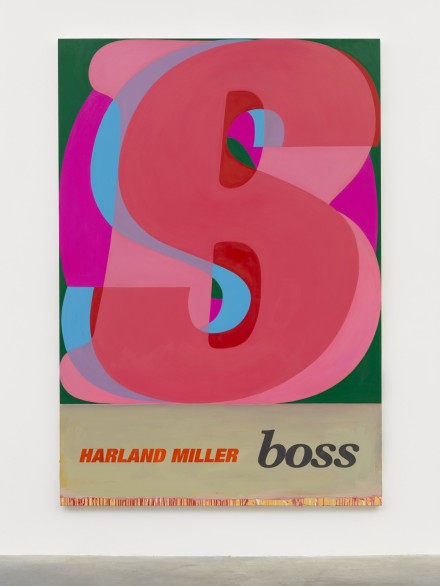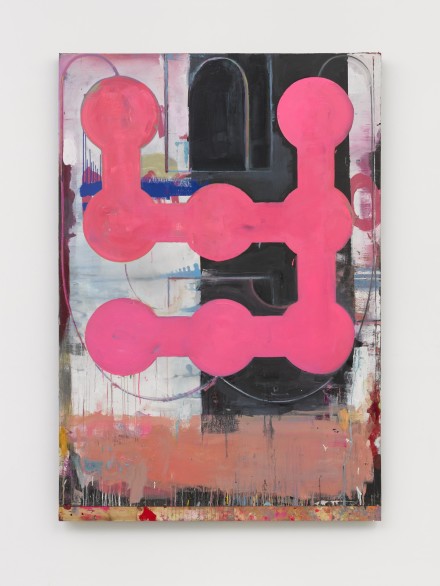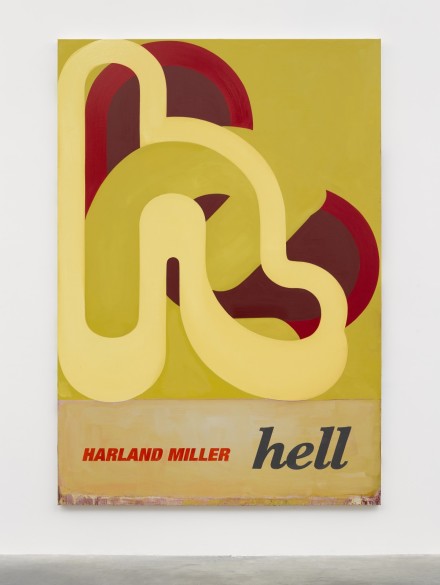
Harland Miller, Me (2019), via White Cube
Mining a unique fusion between graphic design, painting and other tenuously associated aesthetic fields, artist Harland Miller’s work, on view this summer at White Cube’s Hong Kong location, lends itself to a striking and detailed interrogation of the language of design, and the design of language. Miller draws on a wide range of cultural references, including ’60s and ’70s graphic design and the bold, upbeat covers of post-war psychology books, yet set these graphical icons in conversation with the language of American painting, explicitly drawing links between the energetic abstraction of the era and the graphic design that seemed to bubble up alongside it.

Harland Miller, Boss (2019), via White Cube
The works on view here are presented as if they are, in fact, textbook covers, complete with isolated graphics and icons that call the graphics of these texts, as well as that of pulpy sci-fi and western novels into the mix. By using his own name as author within the image, Miller opens up a third space where the artist becomes his own alter-ego, blurring the line between representation and self-reflection. These could be posters for his own shows even, advertising the artist’s work as if he were the center of attention for the text itself, the graphical subject matter around which this text and these images circulate. Large, overlaid letter forms using a pop-like palette twist in and out of the viewer’s focus, negotiating with the artist’s name and reference data. At the bottom of each, a neutral-colored band displays a ‘title’, in the form of short, enigmatic words such as ‘sin’, ‘luv’, or ‘boss’ alongside Miller’s own name as their ‘author’. In a departure from the artist’s previous and well-known series of paintings.

Harland Miller, Why (2019), via White Cube
In contrast to the hard-edged paintings on the ground floor, a new series of smaller-scale paintings in the first floor gallery are expressively rendered, tactile and painterly, with impasto, drips and bleeds of paint marking their surface. In one work, Way (2019), Miller pays homage to the muted palette and linear forms of Art Deco and early 20th century design using triangular motifs and sharp diagonals to contain areas of aquamarine, pink, green or blue. Equally, evoking popular spiritual imagery it suggests a vague sense of mysticism, as well as a palpable tension between its upward, geometric composition and impastoed texture

Harland Miller, Hell (2019), via White Cube
Through a process of formal painterly exploration, fact and fiction become blurred, creating a visual rupture that provokes, questions and draws attention to the inherent possibilities of language within the visual field. This same compositional format is repeated in a new series of delicate and gestural watercolors, also featured in the exhibition, where bold overlaid letters are saturated in thick washes of different colors with the ‘title’ and ‘author’ rendered more precisely, suggesting a potential idea for a future cover, yet to be printed.
The artist’s work is on view through August 24th.
— D. Creahan
Read more:
Harland Miller at White Cube [Exhibition Site]



